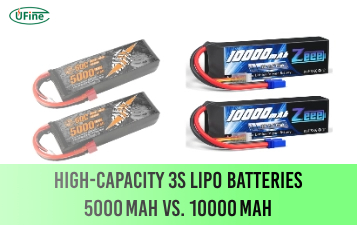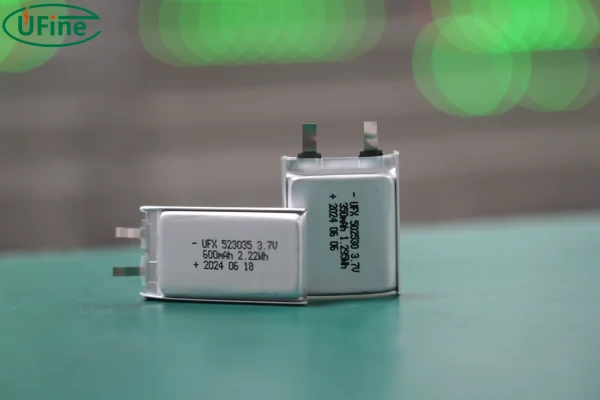Lithium-ion batteries power our everyday lives, from smartphones and laptops to electric vehicles and power tools. Among these, the 3.7V lithium-ion cell stands out for its high energy density and reliability. However, a common question is: How long does a 3.7V lithium-ion cell last? Let’s dive into the details to understand the factors affecting the lifespan of these batteries and how you can maximize their life.
The 3.7V lithium-ion cell is a cornerstone of modern rechargeable batteries. It offers a great balance of power and longevity. However, like all batteries, its lifespan is finite and depends on several variables. Understanding these factors can help you make informed battery usage and maintenance decisions. So, let’s explore how long a 3.7V lithium-ion cell lasts and what you can do to extend its lifespan.
Part 1. Factors Influencing the Lifespan of a 3.7V lithium-ion cell
Several factors impact the lifespan of a 3.7V lithium-ion cell. Here are the most significant ones:
- Charge Cycles: One of the most critical factors is the number of charge cycles the battery undergoes. A charge cycle is one complete discharge and recharge cycle. Typically, a 3.7V lithium-ion cell can handle between 300 to 500 charge cycles before its capacity starts to degrade. Some high-quality cells can even reach up to 1,000 cycles.
- Temperature: The operating temperature significantly affects battery life. High temperatures can accelerate chemical reactions within the battery, leading to faster degradation and potential thermal runaway, which can cause the battery to fail. Conversely, extremely low temperatures can slow these reactions, reducing the battery’s efficiency and performance.
- Depth of Discharge (DoD): The depth of discharge refers to how much of the battery’s capacity is used before recharging. Regularly discharging a battery to very low levels (close to 0%) can shorten its lifespan. Keeping the charge level between 20% and 80% is generally better to maximize longevity.
- Storage Conditions: Proper storage is crucial for maintaining battery health. Storing a battery at full charge or completely drained can be detrimental. The ideal storage charge level is around 50%, and it should be kept in a cool, dry place to prevent degradation.
- Usage Patterns: How often and heavily you use your battery also affects its lifespan. High-drain applications, which draw a lot of power quickly, can reduce the overall lifespan of the cell. Regular, moderate use is better for the battery’s health.
Under optimal conditions, a 3.7V lithium-ion cell can last between two to three years or about 500 charge cycles. However, real-world usage often leads to shorter lifespans due to improper charging practices, extreme temperature exposure, and high-drain usage. With careful management, some users can extend their lifespan to five years or more.
Part 2. How to extend the lifespan of a 3.7V lithium-ion cell?
To get the most out of your 3.7V lithium-ion cell, consider the following tips to extend the cells life:
- Avoid Full Discharges: Try not to let your battery drop below 20% before recharging. Partial discharges are better for longevity and help reduce stress on the battery cells.
- Keep It Cool: Avoid exposing the battery to high temperatures, especially during charging. Heat is a significant enemy of lithium-ion cells. Store and use the battery in a cool environment whenever possible.
- Use the Right Charger: Always use a charger compatible with your 3.7V lithium-ion cell. Incompatible chargers can overcharge or undercharge the battery, which can reduce its lifespan.
- Store Properly: If you need to store the battery for an extended period, keep it at around 50% charge. Store it in a cool, dry place to minimize degradation.
- Regular Use: Batteries degrade over time, even when not in use. Regularly using and charging your battery can help maintain its health and prevent capacity loss.
Part 3. How long does a 3.7V lithium-ion cell last on a single charge?
The runtime of a 3.7V lithium-ion battery on a single charge depends on the battery’s capacity (measured in mAh or Ah) and the power consumption of the device it’s powering.
Typically, the battery can last anywhere from 2 to 10 hours per charge, with the capacity being the main factor that influences how long it lasts.
For instance, a 3.7V battery with a 2000mAh capacity might last for around 5-10 hours in a low-power device.
Part 4. Common applications of 3.7V lithium-ion cells
3.7V lithium-ion cells are versatile and used in various applications. Some common uses include:
- Smartphones and Tablets: Their compact size and high energy density make them perfect for mobile devices, where battery life and size are crucial.
- Laptops: Many laptops use these cells because they offer a good balance of weight, capacity, and longevity.
- Portable Power Banks: Their reliability and long life make them ideal for power banks, providing backup power for various devices.
- Electric Tools: Many cordless tools rely on 3.7V lithium-ion cells for their power needs, offering portability and high power output.
- Wearable Devices: Fitness trackers, smartwatches, and other wearable devices often use these cells due to their small size and long life.
Part 5. Does the device impact how long a 3.7V lithium-ion cell lasts?
The device’s power consumption plays a significant role in how long a 3.7V lithium-ion cell lasts on a single charge. High-power devices like smartphones or drones will drain the battery faster than low-power devices like remote controls or flashlights. The efficiency of the device’s power management system can also affect how long the battery lasts between charges.
Part 6. Signs of a dying battery
Recognizing the signs of a failing battery can help you take action before it completely dies. Some common indicators include:
- Reduced Capacity: If your battery drains quickly or doesn’t hold a charge as long as it used to, it’s a sign of aging.
- Overheating: Batteries that become excessively hot during use or charging may be nearing the end of their life.
- Swelling: Physical changes like swelling or bulging indicate that the battery is deteriorating and should be replaced immediately.
- Slow Charging: If your battery takes longer to charge than usual, it could be a sign that it’s losing capacity and efficiency.
Part 7. Recycling and disposal
Proper disposal of lithium-ion batteries is essential for environmental safety. Never throw them in the trash, as they can be hazardous. Many retailers and local recycling programs offer battery recycling services. Check your local regulations for disposal guidelines to ensure you are complying with environmental laws.
Part 8. Conclusion
The 3.7V lithium-ion cell is a powerful and versatile battery, but like all batteries, it has a finite lifespan. By understanding the factors that affect its longevity and following best practices, you can ensure that your battery lasts as long as possible. Remember to avoid extreme temperatures, use partial discharges, and store properly. With the right care, your 3.7V lithium-ion cell can serve you well for years.
Part 9. FAQs
-
How many charge cycles can a 3.7V lithium-ion cell go through before it degrades?
Typically, a 3.7V lithium-ion battery can go through 300 to 500 full charge cycles before it starts to degrade. A full charge cycle refers to charging the battery from 0% to 100%, although partial charges (e.g., charging from 20% to 80%) also count toward the cycle count. After this point, the battery will gradually lose its capacity and won’t hold a full charge. -
What is the average lifespan of a 3.7V lithium-ion cell?
On average, a 3.7V lithium-ion battery lasts between 2 to 5 years depending on usage and maintenance. Factors like the number of charge cycles, operating conditions (temperature, load), and how well the battery is cared for can either extend or reduce its lifespan. -
Can I prolong the life of my 3.7V lithium-ion battery by charging it frequently in small amounts?
Yes, lithium-ion batteries benefit from partial charges. It’s better to charge your 3.7V lithium-ion battery in small amounts rather than letting it fully discharge and then charging it to 100%. Keeping it in the 20-80% charge range is ideal for long-term battery health and can help prolong its overall lifespan. However, avoid charging it too frequently when it’s already near full, as overcharging can still lead to degradation. -
What happens to a 3.7V lithium-ion battery when it reaches the end of its lifespan?
Download insurance provides the product download service. t can insure you to download the purchased program when you need to reinstal within 24months. -
What is a 30-day Money Back Guarantee?
As a 3.7V lithium-ion battery reaches the end of its lifespan, it will exhibit a significant decrease in capacity, meaning it won’t be able to hold a charge for as long as it used to. In some cases, the battery may no longer charge properly, or it could swell or overheat. Once a lithium-ion battery degrades to the point where it no longer provides adequate performance, it should be replaced.
Related Tags:
More Articles

High‑Capacity 3S LiPo Batteries: 5000 mAh vs. 10000 mAh
Compare 3S LiPo 5000mAh vs 10000mAh batteries by weight, power, and use. Find the best fit for your drone, RC car, or boat setup.
Top 5 Applications for Small 3S LiPo Batteries
Small 3S LiPo batteries power drones, RC gear, wearables, and robotics with high energy and low weight. Making them ideal for compact electronics projects.
Building and Charging Your Own 3S LiPo Pack: A Step‑by‑Step Guide
Learn how to build, balance, and charge a 3S LiPo battery pack safely at home with this complete DIY guide for hobbyists and beginners.
How to Choose the Right LiPo Battery Plug Type?
Discover the best LiPo battery plug types, how to choose them, and expert tips for safe usage, soldering, and maintenance.
Choosing the Right Connector for Your 3S LiPo Battery
Choosing the right 3S LiPo connector depends on current, space, and use. Learn the pros and cons of XT60, JST, EC3, and more.




